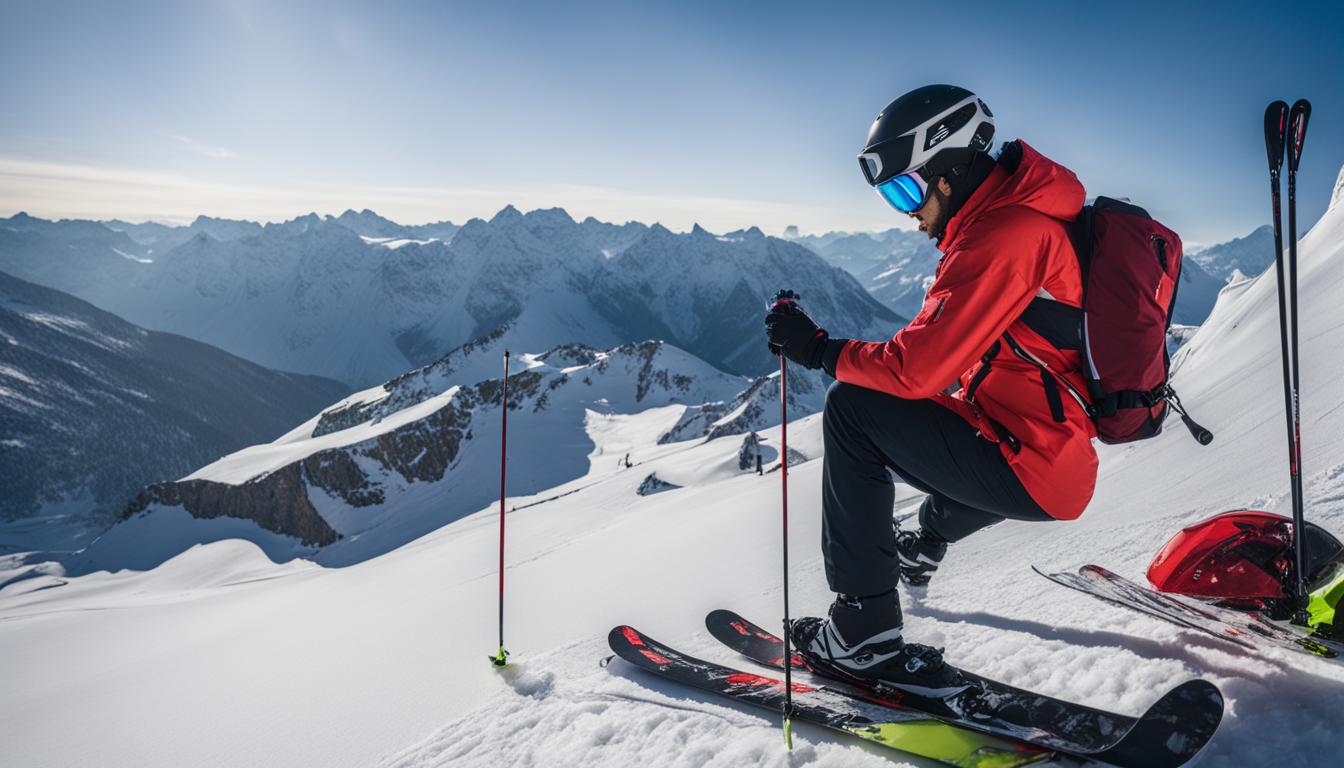
Mastering the Mountain: A Comprehensive Guide to Ski Slope Navigation
Skiing offers unparalleled thrills, but navigating a mountain safely and efficiently requires skill, awareness, and a healthy dose of planning. This comprehensive guide delves into the intricacies of ski slope navigation, equipping you with the knowledge to confidently explore diverse terrain and minimize risks. From understanding trail markings to mastering advanced techniques, we’ll cover everything you need to become a more proficient and safe skier.
I. Pre-Slope Preparation: Laying the Foundation for a Safe Day
Before even stepping onto the slopes, meticulous preparation is crucial. This begins with researching the resort. Familiarize yourself with the trail map, noting the difficulty levels (beginner, intermediate, advanced, expert) and the location of key features like lifts, restaurants, and first aid stations. Pay close attention to the color-coded system used to denote difficulty; typically, green indicates beginner, blue intermediate, red advanced, and black expert. However, variations exist between resorts, so always check the specific legend.
Checking the snow report is equally vital. Knowing the snow conditions – powder, groomed, icy – will dictate your equipment choices and your approach to skiing. Fresh powder requires different techniques than hard-packed snow, and icy conditions demand extra caution. The report will also often highlight avalanche risk, a critical factor to consider, especially in backcountry skiing.
Appropriate attire is paramount. Dress in layers to regulate body temperature effectively. Waterproof and windproof outerwear is essential, along with warm base layers and insulating mid-layers. Don’t forget goggles or sunglasses to protect your eyes from the sun and snow glare, and a helmet to safeguard your head in case of falls.
Finally, inform someone of your plans. Let a friend or family member know which slopes you intend to ski, your estimated return time, and your contact information. This simple precaution could be life-saving in case of an emergency.
II. Understanding Trail Markings and Signage:
Ski resorts employ a standardized system of trail markings to guide skiers and snowboarders. These markings are crucial for safe navigation and preventing accidental straying onto unsuitable terrain. Familiarize yourself with the common symbols and their meanings:
-
Color-Coded Trails: As mentioned earlier, color coding indicates difficulty levels. Always start on trails appropriate for your skill level and gradually progress to more challenging slopes as your confidence grows. Never attempt a slope beyond your capabilities.
-
Trail Signs: These signs provide crucial information such as trail names, difficulty levels, and potential hazards. Pay close attention to warnings about icy patches, moguls, or other obstacles.
-
Boundary Markers: These markers clearly delineate the boundaries of the ski area. Crossing these boundaries is extremely dangerous and often leads to unmarked terrain with significant avalanche risk or hidden obstacles. Always respect these boundaries.
-
Lift Signage: Clear signage indicates the direction and destination of lifts, helping you efficiently navigate the mountain and access different slopes.
-
Emergency Information: Look for signs indicating the locations of first aid stations, patrol offices, and emergency call boxes. Knowing the location of these facilities can be vital in an emergency.
III. On-Slope Navigation Techniques:
Beyond understanding signage, mastering specific navigation techniques enhances safety and enjoyment.
-
Controlled Speed: Maintaining controlled speed is crucial, particularly on steeper slopes or in crowded areas. Adjust your speed based on the terrain, snow conditions, and visibility. Avoid excessive speed that could lead to loss of control.
-
Spatial Awareness: Constantly scan your surroundings, paying attention to other skiers and snowboarders. Maintain a safe distance from others to avoid collisions. Be particularly vigilant at intersections and blind spots.
-
Effective Turns: Proper turning techniques are vital for controlling your speed and direction. Practice different turning styles to adapt to varying terrain and snow conditions. A solid foundation in basic skiing techniques is fundamental for safe navigation.
-
Route Planning: Before embarking on a run, mentally plan your route, considering the difficulty of the slopes and potential obstacles. This preemptive planning minimizes the chances of getting lost or encountering unexpected challenges.
-
Using the Terrain: Learn to use the natural contours of the terrain to your advantage. Utilize natural rollers and slopes to control your speed and maintain momentum.
-
Navigation in Poor Visibility: In conditions of low visibility (fog, snow), reduce your speed significantly and maintain increased awareness of your surroundings. Consider skiing with a buddy and sticking to well-marked trails.
IV. Advanced Navigation Considerations:
For more experienced skiers venturing into more challenging terrain, additional considerations apply:
-
Backcountry Skiing: Backcountry skiing carries significant risks, including avalanches, crevasses, and exposure to extreme weather. Never attempt backcountry skiing without proper training, equipment, and a thorough understanding of avalanche safety. Always ski with a partner and carry appropriate safety gear, including an avalanche transceiver, shovel, and probe.
-
Glacier Skiing: Glacier skiing presents even greater risks than backcountry skiing. Crevasses are a major hazard, and specialized equipment and training are essential. Only attempt glacier skiing with experienced guides who are familiar with the terrain.
-
Navigating Moguls: Moguls (bumps on the snow) require advanced skiing skills. Maintain a controlled speed, use short, sharp turns, and absorb the bumps effectively to avoid falls.
-
Navigating Ice: Icy patches require extra caution. Maintain a controlled speed, adjust your technique, and use shorter turns to maintain control. Consider using metal edges to improve grip on the ice.
-
Tree Skiing: Tree skiing can be challenging and requires advanced skills and spatial awareness. Ensure you have ample space between you and the trees and always anticipate your turns carefully.
V. Emergency Procedures:
Despite careful planning, accidents can happen. Knowing what to do in an emergency is critical:
-
First Aid: Basic first aid knowledge is beneficial. Learn how to assess injuries and provide basic first aid until professional help arrives.
-
Calling for Help: Familiarize yourself with the emergency procedures at the resort and know how to contact ski patrol or emergency services.
-
Staying Calm: In a stressful situation, remaining calm and composed is crucial. This will help you make rational decisions and enhance your chances of a safe outcome.
-
Self-Rescue: In some situations, you might need to self-rescue. Having knowledge of basic self-rescue techniques could be life-saving.
Mastering ski slope navigation is an ongoing process that requires continuous learning and adaptation. By understanding trail markings, employing safe techniques, and prioritizing preparation, you can significantly enhance your safety and enjoyment on the slopes. Remember, respecting the mountain and your own limitations is key to a rewarding and safe skiing experience.



